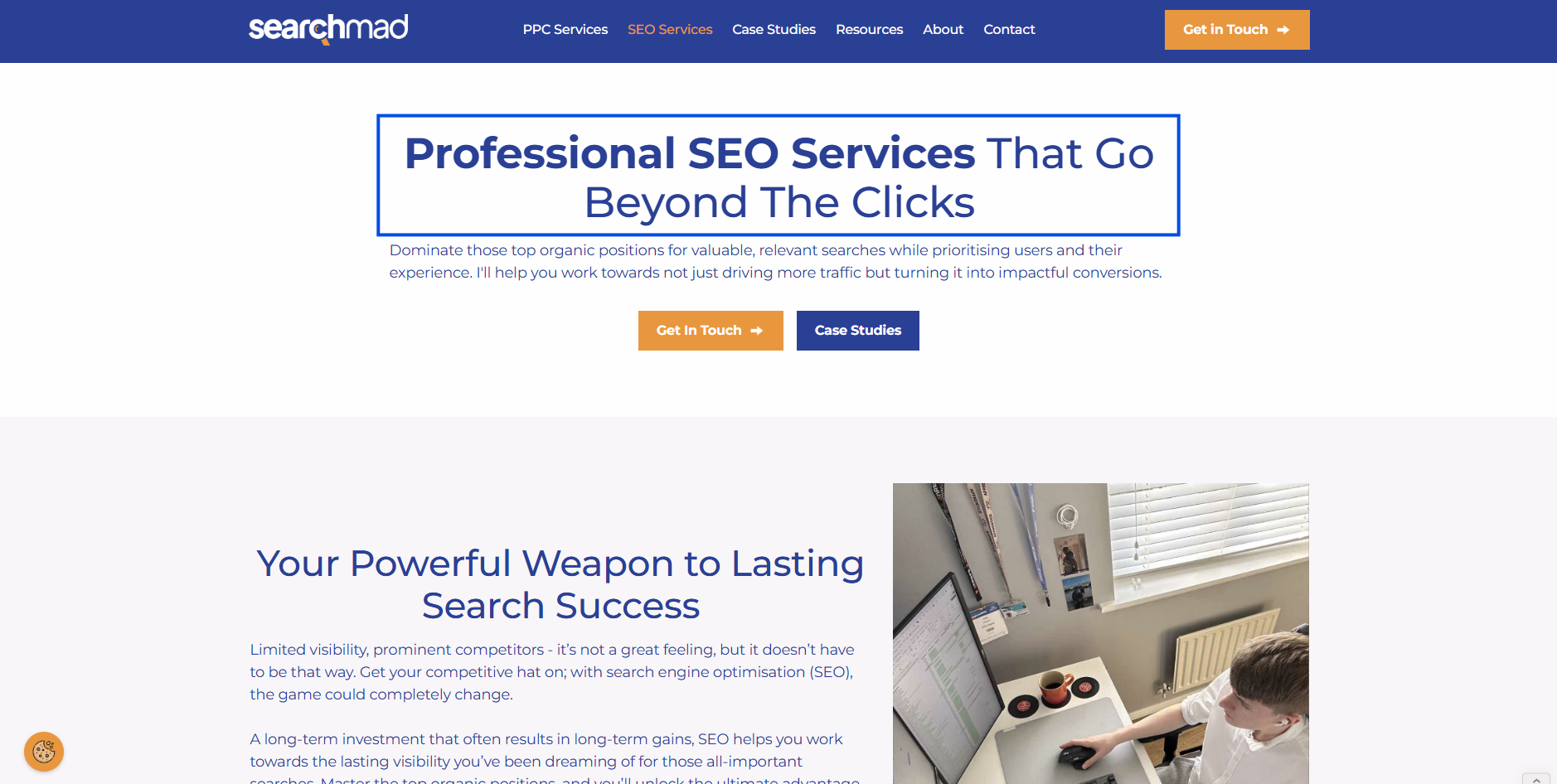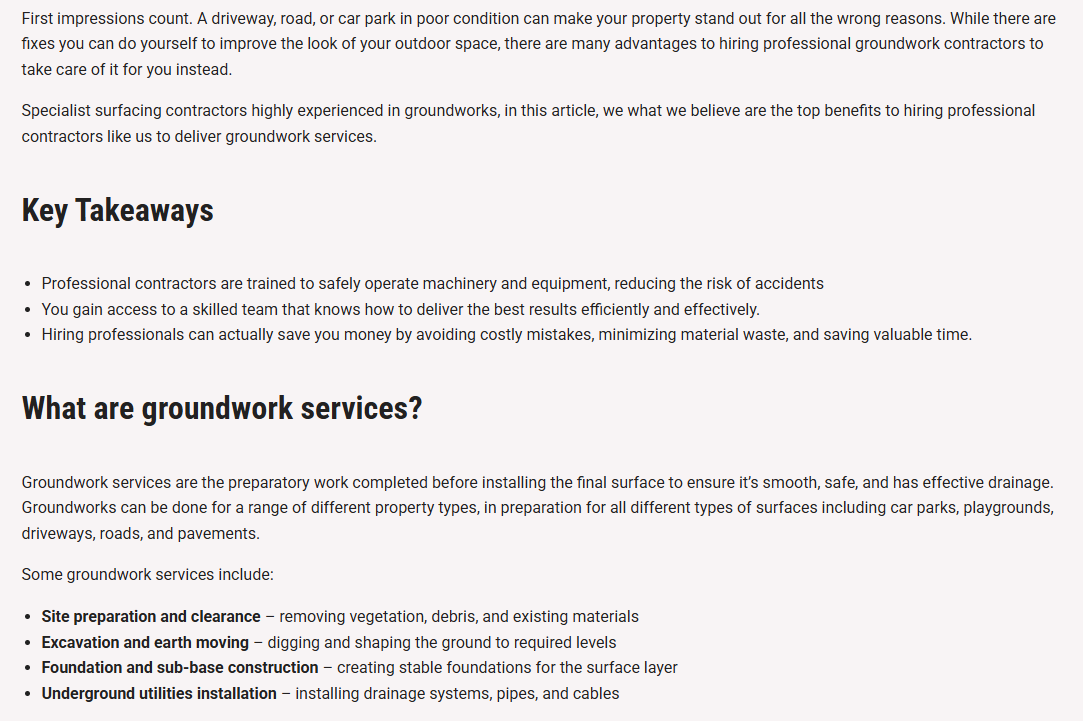As important as SEO testing is, so is doing it correctly. Doing tests and not keeping log, making changes to areas that don’t carry much weight - this 'testing' will end up wasting your time and comes with its risks. To learn how to become a master, you're in the right place.
What is SEO Testing?
SEO testing is the process of making changes to in an effort to improve your site’s organic performance. This could be to increase your visibility, finalising your position, or even achieve a higher engagement e.g. improve click through rate (CTR).
There are two types of SEO testing:
A/B Testing (Split Testing)
A type of testing where two versions of a page or element are tested to see which performs best. Examples include:
· Trailing two sets of title tags and meta descriptions to see which has a better CTR
· Creating two different versions of a page to test and see which performs ranks better – different layout, different content.
Before and After Testing
A type of testing where a change made to your site and performance is then monitored the performance to see if there's an improvement. Examples include:
· Moving keywords to be strategically placed at the start of paragraphs, to see if they hold more weight, effecting rankings.
· Removing meta descriptions from articles to see if the ones search engines write drive better CTR.
Common SEO Elements to Perform Tests On
They’re so many elements you can change as tests to see what impact they have on your site’s performance. Some, however, do carry more weight than others.
Headings (H Tags)
Headings carry more weight than paragraph text.The H1, the main title of the page, carries the most weight, whereas the H6 carries the least. You can change the wording of your heading tags to measure what difference it makes.
Test variations that include your target keywords naturally while maintaining readability. Consider testing longer versus shorter.

Images
Crawlers can't visualise images like humans and rely on image alt text to get an understanding of what it's about. By writing these for the images on your pages or adjusting them to be targeted more around the pages they're on, it may help increase the visibility of both the page and the images across search.
Test different approaches: descriptive alt text versus keyword-focused variations, or detailed descriptions versus concise ones.

Meta Descriptions
The descriptions that appear alongside your pages in search results, known as meta descriptions, don't affect rankings, but can make all the difference to the CTR. Writing these if you don't have them or rewriting to pop out that bit more, according to whether Google decides to use them, they may massively improve the amount of clicks you get through to your site.
Test emotional hooks versus feature-focused descriptions,question-based meta descriptions versus statement-based ones.

Content Structure
Google in particular is used to processing information in all forms, whatever the structure, but a well-structured page will only help improve your visibility. Making it easier for them to understand, you may be rewards, and pieces of your content may ever show up in other forms in the results, like in the People Also Ask box.
Experiment with bullet points versus paragraphs, numbered lists versus traditional formatting, and FAQ sections versus a block of text. Adding clear summarises, directly answering the question your article is answering, can work wondering in getting cited in AI results.

Schema Markup
A type of structured data, schema markup helps search engines better understand the elements on a page, also making you eligible for rich results. Rich results help your site stand out that bit more in search, both appearing alongside your results and in separate areas like the People Also Asked box. Overall, it should help increase your chances of getting seen and clicked in search.
Test different structured data implementations to see which generate rich snippets and improve click-through rates. Experiment with the different schema types - consider what your competitors have got.

Internal Links
Internal links help in many ways from helping search engines get a better understanding of what a page is about, with navigation, to passing value from one to another. What may seem like such a small thing can really make such a huge difference.
Test different anchor text, using different varieties aligned with what it's targeted to see what impact it has. Pages relevant to each other should be linked between one another – if they're not, give it a go, and see what difference it makes.

How To Perform Effective SEO Tests
Behind SEO testing should be a well-planned strategy. Effective tests aren't just randomly done and left; they're done with a goal in mind, kept note of, and monitored regularly. Fancy giving it a go yourself? Step by step, here's how you can go about testing properly.
Set Clear, Measurable Goals
Why are you testing? What are you trying to achieve? Behind your tests, there should be clear measurable goals. The SMART framework is good to consider when crafting your goals, standing for specific, measurable, achievable, relevant, and time-bound.
Specific: Instead of "improve rankings", aim for "increase rankings for target keyword 'best running shoes' from position 10 to within the top 3". This gives you a clear target to work towards.
Measurable: Define exactly what you're looking to achieve. 20% increase in organic traffic? A 15% improvement in click-through rate? Setting clear targets will make it easy for you to know when the goal has been achieved.
Achievable: Be realistic about what's possible within your timeframe and resources. Although it depends on many factors, moving from position 50 to within the top 3 in a month may be a bit opportunistic.
Relevant: Your testing goals should align with broader business objectives. If your company wants to sell more shoes and the SEO in that area could do with improvement, that's where your testing efforts should be focused.
Time-bound: Set clear deadlines e.g. "Move from position 10 to between position 1-3 within 3 months". Doing so will help you prioritise it - if you don't achieve it, you simply change it, and work towards the target again.
Keep Track of All Tests
Implementing tests without keeping proper track is risky. If performance drops, you need to know exactly what was done, so you can revert things or try something different. At a minimum, you should keep a log noting:
· What was changed - a name and description
· Screenshots - before and after, where relevant
· Date of change – when the test went live
· Review date – when to evaluate its impact
Regularly Measure Impact
Once tests have been implemented, their impact should be measured. It can take time for them to take effect, so reviewing every 1-3months is appropriate. Don't expect instant results; Google needs time to recrawl and reindex your site with the changes.
Using Google Search Console, look at when you implemented the test and the impact it seems to have had.
· If it's dropped, revert and rethink.
· If it's gone up, leave it and crack on with your next test.
Tools To Support Your SEO Testing Efforts
Whereas you can put a simple spreadsheet together to keep track of your tests, there are pros and cons. Using one of the many tools available, you can streamline the process, getting everything from reminders when they need to be reviewed to those that monitor since you made the changes.
One of the leading tools is SearchPilot, a dedicated SEO A/B testing platform which helps SEO teams run rapid, revenue-boosting programs for large, mission-critical websites. It's a go-to platform used by many SEO professionals, including the SEO teams behind M&S, Vistaprint, and more.
With advanced features such as automated analysis, it allows you to easily measure the impact of tests, summarising the success for you. Acting as a meta-CMS, you can make changes to your website right in the platform, limiting the risk of everything going wrong with your website while also reducing the time it'd usually take.
Quite happy to stick with a good old spreadsheet? That’s fine too, just as long as it works for you.
Here To Help with All Things SEO
Testing is an important part of SEO that shouldn’t be overlooked. After investing lots of time, lots of money in optimising your website, you shouldn’t just leave it as-is. Ongoing testing, your key to opening that door just a little bit more.
No time for testing? Prefer to hand it over to a specialist who knows what works? An experienced SEO consultant in Lincoln with a high amount of experience and expertise in all things SEO, I’m here to help. As part of my professional SEO services, I can develop and implement a testing strategy, helping maintain and improve your search performance.
Take your next step towards search success - get in touch with me today for free, open and honest advice.
-03.png)

.svg)


.svg)
.png)

-02.png)